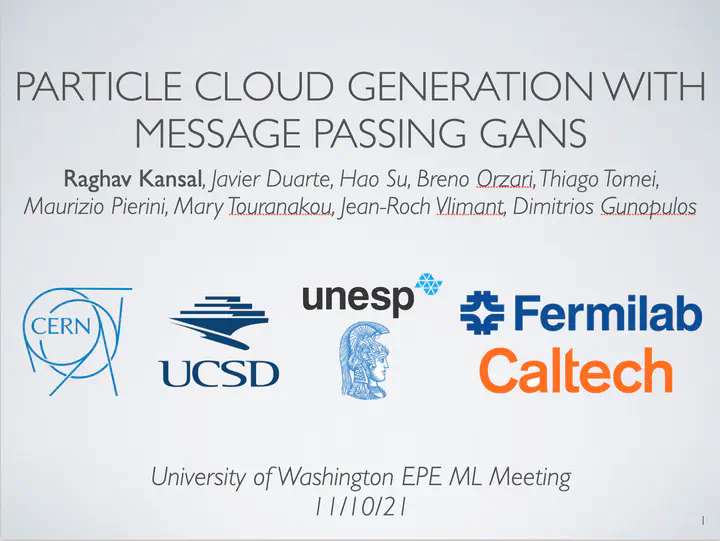
Abstract
There has been significant development recently in generative models for accelerating LHC simulations. Work on simulating jets has primarily used image-based representations, which tend to be sparse and of limited resolution. We advocate for the more natural ‘particle cloud’ representation of jets, i.e. as a set of particles in momentum space, and discuss four physics- and computer-vision-inspired metrics: (1) the 1-Wasserstein distance between high- and low-level feature distributions; (2) a new Fréchet ParticleNet Distance; (3) the coverage; and (4) the minimum matching distance as means of quantitatively and holistically evaluating generated particle clouds. We then present our new message-passing generative adversarial network (MPGAN), which has excellent performance on gluon, top quark, and lighter quark jets on all metrics, validated against real samples via bootstrapping as well as existing point cloud generative models, and shows promise for use in high energy physics.